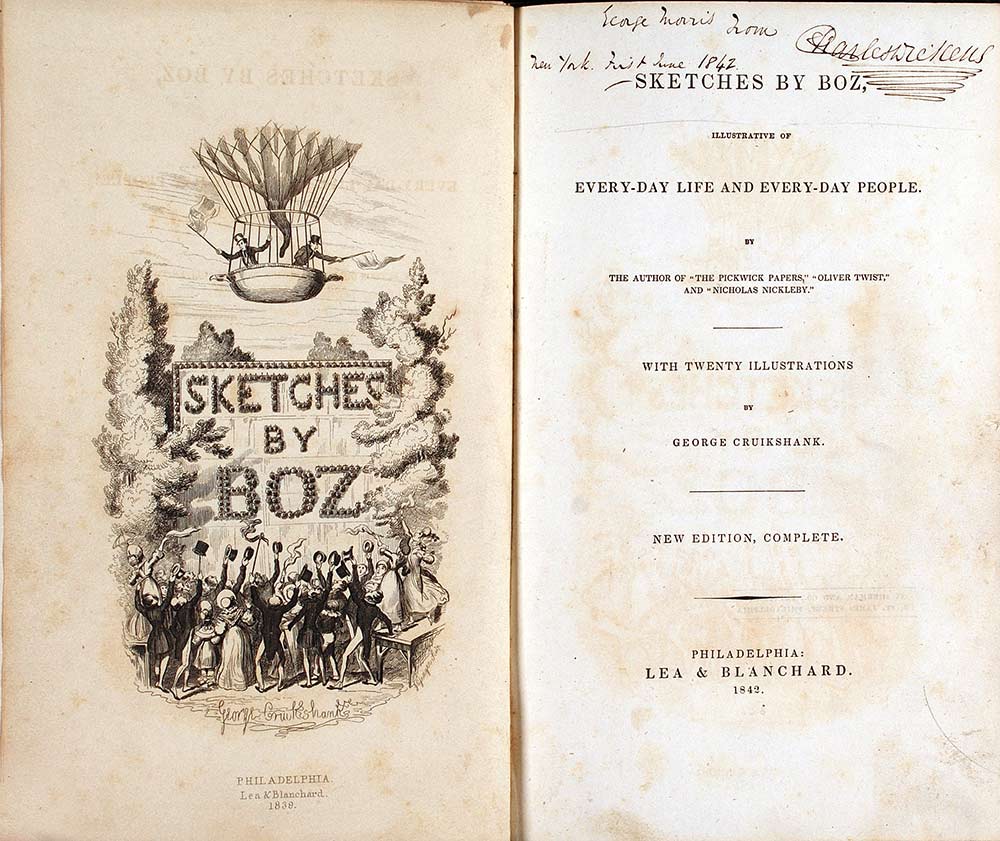
Sketches by Boz … Philadelphia: Lea & Blanchard, 1842.
In 1835, the historical novelist, Harrison Ainsworth (1805–82), introduced Dickens to his first publisher, John Macrone (1809–37). Macrone, who had read and admired Dickens’s short tales and “sketches” he had published in journals and newspapers, offered to issue a selection of them as a book. Dickens, his reputation on the rise, gladly accepted the proposal. George Cruikshank (1792–1878), the leading comic draughtsman with whom Dickens would closely work for many years, was contracted as illustrator, and work began in October 1835.
Sketches by Boz appeared on the market on 8 February 1836, just one day after Dickens’s twenty-fourth birthday. It was his first book and proved a great success. So much so that Macrone commissioned and published a second series in one volume in December.
“Boz”, Dickens’s occasional pen-name, comes from his younger brother’s pronunciation of “Moses”. According to Dickens scholar Michael Slater, when Augustus Newham Dickens (1827–66) was born, “the new baby was given the family nickname of Moses after Dr Primrose's gullible son in The Vicar of Wakefield, a name that he pronounced as ‘Boses’ when he began to talk. The family adopted this and shortened it to Boz (ardent Dickensians still dispute as to whether it should be pronounced with a short or long o)”.

